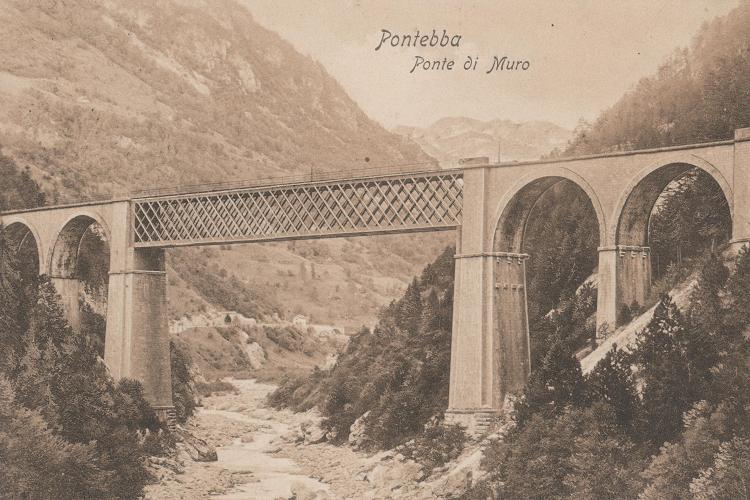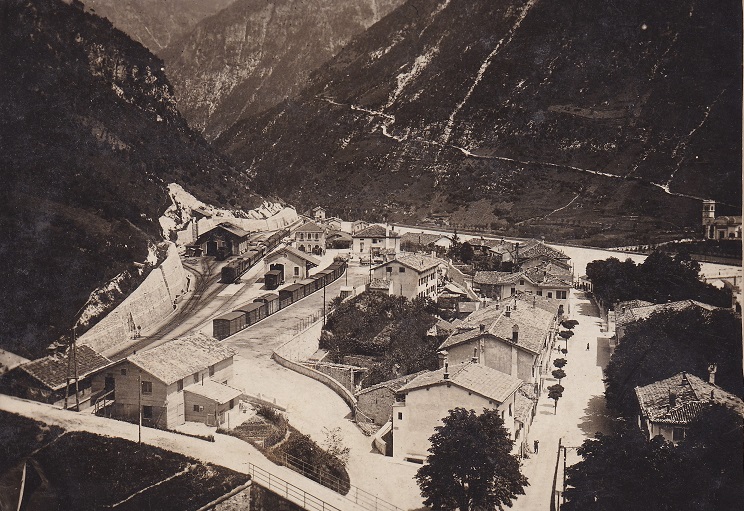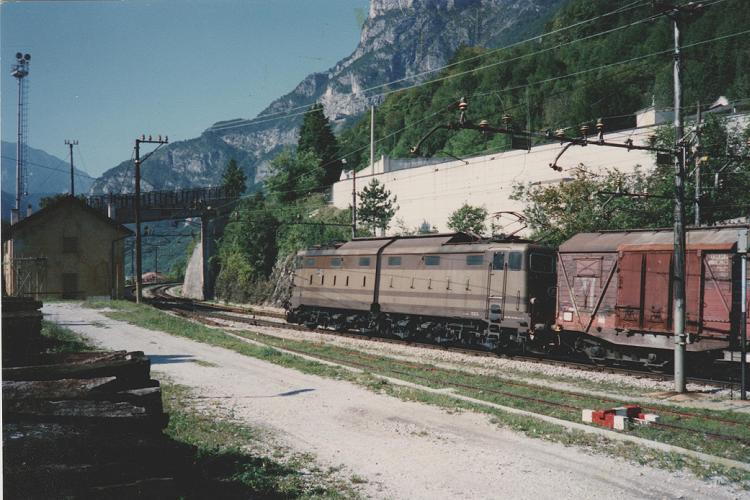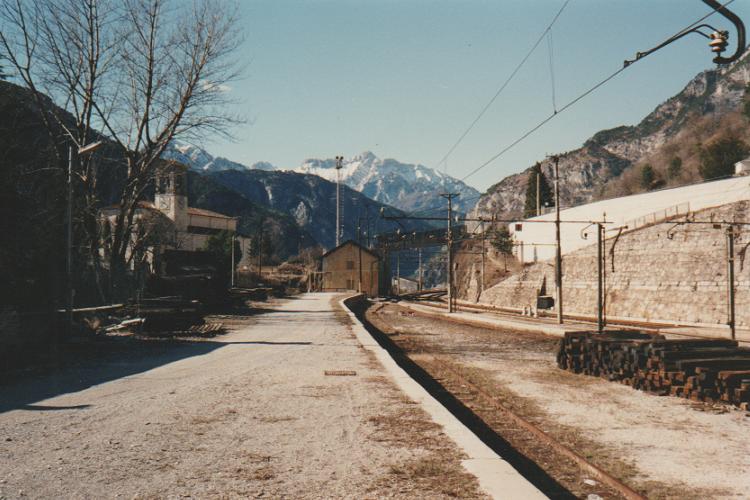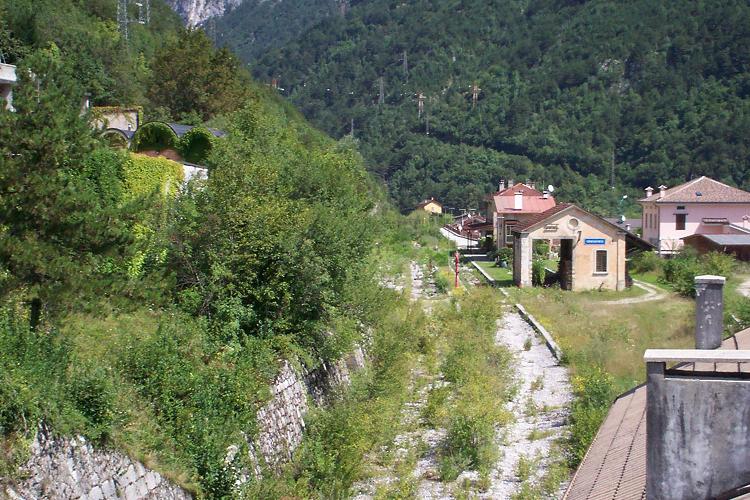The line connects the Italian town of Udine, 358 feet above sea level, with Pontebba, 1,860 feet above sea-level, on the Tarvis- Pontafel railway, near the Austro-Italian frontier. For a great part of its length (42 ½ miles) it runs through a country of exceedingly difficult character, necessitating the construction of twenty-eight tunnels, various heavy viaducts, and about four hundred bridges, the total cost amounting to about £1,440,000. The portion nearest Pontebba is the most expensive, for the last 7 ½ miles averaging over £69,000 per mile. Diagrams are given showing the normal sections of the battering and vertical retaining walls, with tables in terms of the height and thicknesses at base and top ; but in practice these had to be considerably modified. In cases where the rock was sufficiently stable, pier and arch retaining-walls were used. The battered retaining-walls are generally surmounted by a parapet 3 feet 3 inches in height, and the vertical ones by a wrought-iron balustrading, with an arrangement for allowing an expansion of 5/8 inches at every 82 feet. A diagram of the cross-section adopted for tunnels, which was the same in all cases, is given. It is of horse-shoe form, the interior maximum dimensions being 18 feet by 18 feet. In almost all cases the tunnels were lined, the least thickness being 1 foot 4 inches, and in instances where character of strata was unfavourable, varying from 1 foot 9 inches to 3 feet 6 inches. The total length of curves on the line is 12 ¼ miles, the minimum radius being 15 chains. The total length of tunnels (twenty- eight) amounts to 3 1/3 miles. The number of stations is twelve, and of the various watch guard-houses, including those at each end of stations, is seventy-five, frequent inspection of the line being necessary, there being an annual rain and snow fall of from 59 to 94 ½ inches, occasioning frequent land-slips. The guard-houses are elevated on an arched basement, and contain four chambers, and cost on the average £190 each. The works in general were executed by contract. The various descriptions of masonry come under the heads of coursed and uncoursed, full and partial mosaic work. In the former class no two consecutive courses were to vary more than 2 inches in depth, the minimum to be 12 inches. In full mosaic work the stone is of pentagonal form on face, and in partial mosaic work may be less regular.The workmen employed were generally from the north of Italy, the Piedmontese being the best stone-setters and tunnel-men, the Friaulese excelling in ashlar, and the Lombardians in brickwork, whilst the Romagnians and Padovians made the best excavators.
The Author gives a detailed description of the circumstances and difficulties attending the erection of the viaduct Ponte di Muro.
At the end of the summer of 1878, the whole line was completed with the exception of the Ponte di Muro. In Italy it is necessary that the designs for all bridges of more than 32 feet 9 inches span should be submitted to the Minister of Public Works for approval. Three designs for this construction were sent in, but in consequence of the delay in the acceptance of the one finally decided upon the actual work was not commenced until the end of September 1878.
As it was impossible to erect the permanent iron girders by the time appointed for opening the line, it was determined to make the timber staging used for erection sufficiently strong to carry on the railway traffic temporarily, and at the same time to be constructed in such a manner as to permit of the girders ultimately being got into their place without arresting the traffic. With this object the rail level on the staging was made 2 feet higher than the intended permanent level.
A contract was entered into with a firm at Castellamare for the erection both of the staging (to be completed by the commencement of July, 1879), and also the supply and erection of the girders which were to bo in their place and finished by the end of November. Owing, however, to the non-delivery of the ironwork, this staging had to serve until May 1880. This was rendered possible only by the fact that there were no floods of importance during the interval. On the 12th of July, 1879, the staging was tested with seventeen heavily-laden ballast wagons and two loco- motives running over at a rate of 12 ½ miles per hour, the result being a temporary deflection of ¾ inch, and a lateral movement of 1 ¾ inch. During the time that the staging was in use the 75-ton engines made by Sigl, of Vienna, were not run, the traffic being worked by smaller ones of 58 tons run at a low speed, and all trains were stopped before crossing to take up an attendant, who again alighted after crossing. On the 20th of May, 1880, the iron construction was completed; the work connected with the operation of changing the traffic from the provisional to the permanent structure was principally performed in the course of one night, and necessitated the suspension of three trains only. The girders were proved with two Sigl engines and tenders weighing 75 tons, and a smaller engine of 58 tons ; with this as a running load, the temporary deflection was 1 ¼ inch, and lateral movement 1/4 inch..
Zeitschrift des österreichischen Ingenieur- und Architekten-Vereins, 1880

